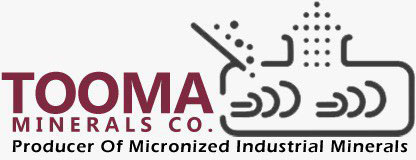Mica powder, a versatile and shimmering substance, is making its mark in various industries. From cosmetics to automotive paint, this mineral-based powder has found its way into countless applications. In this article, we will delve into the captivating world of mica powder and discover its role in industry. We’ll explore its applications, properties, and the reasons it’s so highly regarded. So, what is mica powder, and how does it contribute to the industries it serves? Let’s embark on this enlightening journey to find out.

Table of Contents
1. What is Mica Powder?
2. The Unique Properties of Mica Powder
3. Cosmetic Applications
4. Industrial Coatings
5. Mica in Electronics
6. Mica’s Role in Construction
7. Oil Drilling Industry
8. Automotive Paint and Mica
9. Mica in Plastics and Rubber
10. Health and Safety Considerations
11. Environmental Impact of Mica Mining
12. The Future of Mica Powder in Industry
13. Frequently Asked Questions (FAQs)
1. What is Mica Powder?
Mica powder is a finely ground mineral, known for its shimmer and versatility. It is derived from mica, a group of silicate minerals abundant in the Earth’s crust. The minerals are processed, resulting in a fine powder that reflects light, giving it a radiant appearance. This natural luster makes mica powder an ideal choice for various industries.
2. The Unique Properties of Mica Powder
Mica powder exhibits exceptional properties that make it indispensable in industrial applications. It is highly heat-resistant, electrically insulating, and chemically inert. These qualities ensure its longevity and safety in various settings.
3. Cosmetic Applications
In the world of cosmetics, mica powder takes the center stage. It is a key ingredient in makeup products such as eyeshadows, blushes, and lipsticks. Mica’s shimmering effect adds a touch of glamour to these products, making them highly desirable in the beauty industry.
4. Industrial Coatings
Mica powder is an integral component of industrial coatings. Its ability to improve the durability and appearance of coatings has made it a favorite choice for manufacturers. It’s used on surfaces ranging from metal to wood, enhancing both aesthetics and protection.
5. Mica in Electronics
The electronics industry relies on mica for insulating materials. Its electrical and thermal insulating properties make it invaluable in the production of electrical components, such as capacitors and wires. This use ensures the safe and efficient operation of electronic devices.
6. Mica’s Role in Construction
Mica powder is a hidden hero in the construction industry. It is mixed into various construction materials, including concrete and plaster, to enhance their strength and workability. Its natural sheen also contributes to the visual appeal of architectural finishes.
7. Oil Drilling Industry
Mica powder plays a crucial role in the oil drilling industry. It is used in drilling fluids to prevent clogging and lubricate the drilling bit. This aids in smooth drilling operations, ensuring that the process is both efficient and productive.
8. Automotive Paint and Mica
The automotive world has not remained untouched by the charm of mica powder. It is often added to automotive paints, providing them with a brilliant sparkle and depth. Car enthusiasts appreciate the unique finish that mica-infused paints offer.
9. Mica in Plastics and Rubber
Plastics and rubber industries incorporate mica powder to improve the mechanical properties of their products. It enhances the strength and durability of materials, ensuring they withstand the test of time.
10. Health and Safety Considerations
Mica powder is generally considered safe when used in accordance with industry standards. However, inhaling large quantities of airborne mica dust can lead to respiratory issues. Proper safety measures are essential when handling mica powder.
11. Environmental Impact of Mica Mining
Mica mining has raised environmental concerns due to unsustainable practices. In some regions, the extraction process has led to deforestation and habitat destruction. Ethical and sustainable sourcing of mica is crucial to minimize these impacts.
12. The Future of Mica Powder in Industry
As industries evolve and environmental awareness grows, the future of mica powder in industry is at a crossroads. Innovations in sustainable mining practices and increased demand for eco-friendly materials may shape its future applications.
Frequently Asked Questions (FAQs)
1. What makes mica powder unique?
Mica powder’s uniqueness lies in its shimmering appearance and versatile properties, including heat resistance and electrical insulation.
2. Why is mica powder popular in cosmetics?
Cosmetic products use mica powder for its ability to add a touch of glamour and shine, making makeup more visually appealing.
3. How does mica powder contribute to the automotive industry?
Mica powder enhances automotive paints, giving them a brilliant sparkle and unique finish, which appeals to car enthusiasts.
4. Is mica powder safe to use in industry?
When used according to safety standards, mica powder is generally safe. However, proper precautions must be taken to avoid inhaling excessive amounts of airborne mica dust.
5. What is the future of mica powder in industry?
The future of mica powder depends on sustainable mining practices and the demand for eco-friendly materials. As industries evolve and environmental concerns grow, mica’s role in industry may change.
Conclusion
Mica powder is not just a shiny substance; it’s a vital ingredient in numerous industries. Its shimmering allure in cosmetics, protective qualities in industrial coatings, and insulating properties in electronics highlight its versatile nature. However, it’s essential to be mindful of health and safety considerations and promote ethical mining practices to ensure mica powder’s sustainable future in industry. So, next time you see a sparkling cosmetic product or admire the finish on a car, remember that the magic of mica powder is at work behind the scenes, making our world a little more beautiful and functional.

Leave A Comment